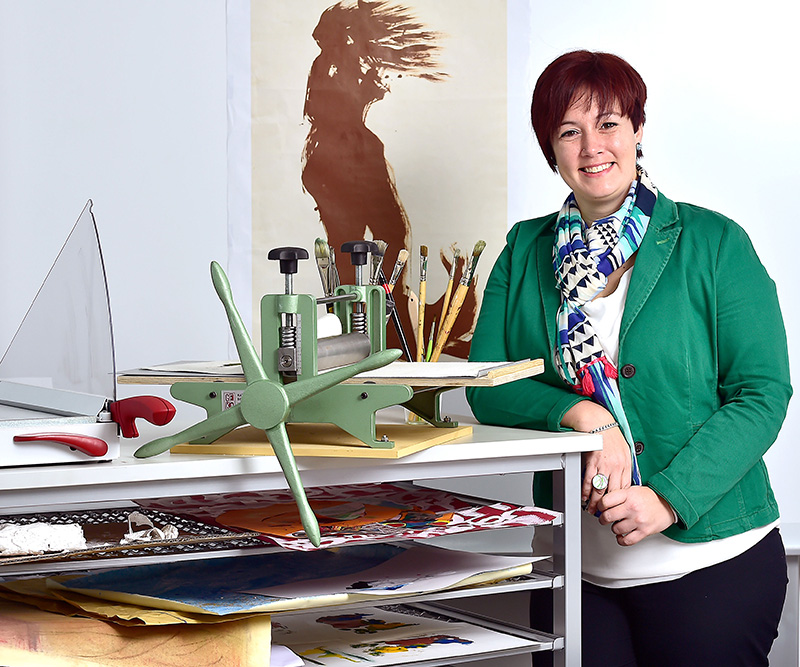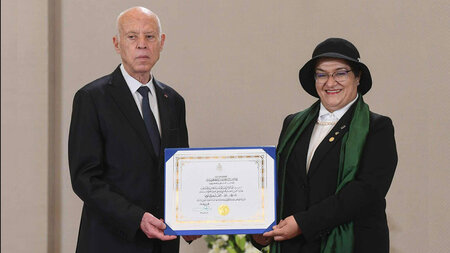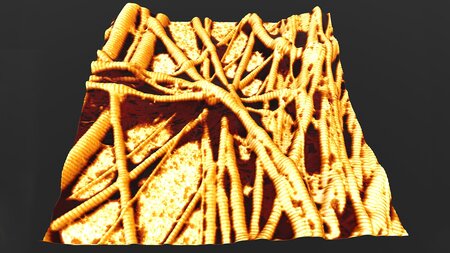Initiate Successful Aesthetic Processes
Eleven questions for Junior Professor Dr. Rebekka Schmidt, who is the holder of the Junior Professorship for Didactics of Arts and Crafts in Primary Education since September 2014
-

Jun.-Prof. Dr. Rebekka Schmidt holds the Junior Professorship for Didactics of Arts and Crafts in Primary Education - her task: "The overall goal is to explore and teach how arts and craft classes with high quality can be implemented in the primary school." Photo: Sven Gleisberg
Jun.-Prof. Dr. Rebekka Schmidt (37) holds the Junior Professorship for Didactics of Arts and Crafts in Primary Education at the Centre for Teacher Training since September 2014. In eleven answers, she gives the readers of “University News“ an insight into her career, goals and time in Chemnitz.
What do we actually understand under your area of specialization in “Didactics of Arts and Crafts in Primary Education”?
The overall goal is to explore and teach how arts and craft classes with high quality can be implemented in the primary school. To achieve this, the research is engaged in examining the general education quality criteria and adapting them for the specific conditions and requirements of the subject of arts. That way insight into how aesthetic processes can be successfully initiated can be gained. The students look deeply into these results and work out how to stimulate aesthetic experiences and how to convey visual literacy in their arts and crafts classes. Also they actively participate in creating arts for art is teachable to only some extend, there is also a part that one can only learn by their own actions and intensive, self-administered examination of the subject. Thus theory and practice are united through the Didactics of Arts and Crafts in several areas: For one in the field of teaching for the other in the apprenticeship and the practical use of principles in art itself. This adds up to a great variety which is one of the reasons for my fascination with the subject.
TU Chemnitz is for me as a professor the right choice, because…
… the Centre for Teacher Training includes many different disciplines, that all share the same ambition: to improve the practice of teaching at school both, through research and through teaching itself. This common goal leads to exciting synergies. The similarities and differences between art and other subjects as well as interdisciplinary teaching haven’t been on my mind this intensely since my time here. To me this is a great addition, as ones thinking is all too often restricted to the own area of expertise and thereby does not bear in mind that others deal with similar issues. By working together, already existing knowledge can be used for specific research issues as well as for solving common demands effectively.
Could you say a few words about your academic career?
Following my academic studies, I completed the traineeship for becoming a teacher and graduated with the second state examination. After five years of teaching at school, I returned as a representative to the University of Bamberg. Here I first worked in arts and crafts education by teaching and research. The examination of works of art especially with younger children has particularly interested me both while working at school and at the university. Therefore the research related to my dissertation was centered around the question whether and how to stimulate students own thinking and constructing knowledge during the reception of art. This in a nutshell sums up the education quality criteria of ”cognitive activation”. From 2012 to 2013 I was employed at the Professorship for Primary Education in Bamberg. Since October 2013, I already worked as a Research Associate at the Centre for Teacher Training at TU Chemnitz, where I was responsible for the Didactics of Arts and Crafts in Primary Education. After completing my doctor’s degree, I took over the junior professorship in this area.
Describe your study time in about 15 words.
Intense, long nights, much art, new ideas, questioning of alleged truths, exciting, varied, demanding, museum marathon.
Did you have role models during your studies, who encouraged you to pursue a scientific career?
Above all, an art lecturer influenced me, who has infected me with her enthusiasm for the history of art and showed me that this can be a very exciting area – which is why I made the reception of art my research topic. Scientifically my most important role models are probably my two doctoral advisors, whose tireless interest in research had great impact on me, as they have shown me to the importance of always asking further questions and staying curious.
What advice would you give to young students and graduates?
To remain curious and also to think and study outside the box. Academic studies not about coming ”through“ with the least effort, but to take advantage of what on the university has to offer and to broaden the own horizon as intensively as possible.
What would you like to achieve in teaching for the future?
I want the students to be reflected teachers, who have a comprehensive and nuanced understanding of arts so that they are able to adapt their teaching in a flexible and open way to the needs of their students.They should experience and question the construct “Arts“, both practically and scientifically and learn how to implement these findings in a competency-based education with high quality.
Which impact do you make in the research at TU Chemnitz?
The focus of my research is the improvement of teaching of arts and crafts. My thesis, which I begun to write for obtaining a doctorate is long not yet finalized and further analysis of the data is planned. For this purpose, the general education criteria are being specified for arts and crafts classes and their implementation using video studies investigated quantitatively and qualitatively. This way hints for art classes with high quality can be developed to be the impetus for schools in Saxony. Secondly, the junior professorship is involved in interdisciplinary research project “meLT - mehrperspektivisches Lernen mit Tablets“ (tablet-based multi-perspective learning). The research concerning art education is interested in how such gadgets as tablets can be usefully integrated into the classroom and how they contribute to the promotion of artistic skills, aesthetic experience, expression and media literacy. The study of ProMotiKuS (“Entwicklung von professioneller Kompetenz und Motivation im Lehramtsstudium Kunst und Sport”) (Development of professional competence and motivation for teaching arts and sports at primary school) examines the development of subject-specific professional competence of the students in the subject of arts and sports.
There are around 45,000 professors at German universities. What sets you apart from others?
I can’t say this with absolute certainty. I think, in terms of art education, I am one of the few who believe that quantitative research in this area may be important and helpful and has ventured to this area. Statistics are often not quite up an Artist’s alley. At the same time, I am aware that especially in the field of aesthetics there are things that are not to be gathered with “numbers“. Therefore I am striving for the area of qualitative research also. Furthermore, I bring a sound mix of theory and practice, and am versatile, which is evidenced by my various research projects.
Which place do you show your guests the most in Chemnitz?
The Gunzenhauser Museum. I think the exhibitions are beautifully conceptualized, it is a great building and I experienced only good guided tours so far. Besides, I am glad to always discover something new there.
How do you play a part in the life of the city?
So far, unfortunately, probably more by the fact that I use the offer of the city by visiting museums, theaters, concerts, restaurants and cafés in the first place. But I also work on building cooperations with teachers and schools as well as linking the university with the cultural institutions of Chemnitz. Specifically, this happens at the moment by offering “Art for Creativity“ – a program of the general studies course. Various other projects are being planned.
Further information about professorship at: https://www.tu-chemnitz.de/zlb/professuren/grundschuldidaktik_kunst.php
(Translation: Nataliia Boiko)
Katharina Thehos
02.02.2015




